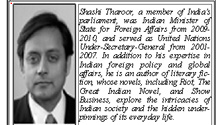By Shashi Tharoor
NEW DELHI – April might be the cruelest month, but, for India’s major political parties this year, March is fairly brutal. On March 6, following an American-style “Super Tuesday” of its own, India announced the results of five state assembly elections, which confounded pollsters, surprised pundits, and shook a complacent political establishment.

In the tourist paradise of Goa, the Congress government expected to be re-elected, but was trounced by a resurgent Bharatiya Janata Party (BJP). Meanwhile, the two parties found themselves neck-and-neck in the hill state of Uttarakhand, with neither claiming a majority, though Congress had been heavily favoured in the polls.
But the greatest surprise was in India’s largest state, Uttar Pradesh (with a population of 200 million), where 402 legislators were elected to its massive state assembly. The incumbent chief minister, Mayawati, whose Bahujan Samaj Party (BSP) won an absolute majority last time by forging a “rainbow coalition” composed of her Dalit (formerly “untouchable”) constituency and upper castes, was summarily ousted. Neither of the national parties, however, benefited from the BSP’s demise. Congress limped to the finish line with just 27 seats, and the BJP fared little better. Instead, a local socialist group, the Samajwadi Party, claimed a convincing 221 seats.
What does all of this portend for India? The obvious fear is that the apparent weakening of both major national parties (Congress and the BJP) will lead to political instability. But India takes electoral convulsions in its stride, and the results triggered no turmoil in financial markets. Thanks to the vagaries of the parliamentary system and the country’s sprawling size, elections seem to take place somewhere every six months, and investors and political analysts are rarely perturbed by even the most unpredictable outcomes.
In the short term, some worry that the ruling Congress will be enfeebled by the results, and that India might soon face an early general election, which is not due until 2014. Congress depends on the support of a number of coalition partners, as well as backing from non-government parties like Samajwadi that do not support the BJP-led opposition, to pass the annual budget and survive parliamentary confidence votes. But recent electoral successes for at least two of the regional parties – the Trinamool Congress, which rules West Bengal, and now Samajwadi – have fueled speculation that they might be tempted to bring down the central government in order to emerge stronger after early polls.
But, even if an early general election cannot be ruled out completely, it seems implausible that either party will feel it has much to gain from precipitating the collapse of the national government. On the contrary, both Trinamool and Samajwadi stand to benefit from having a government in New Delhi that is dependent on their goodwill. Why, with the central government in thrall to them, should they venture into the unknown perils of an early election?
It might seem that India has too much democracy – elections in one state or another every few months, a fragmented political establishment (with more than 40 parties represented in Parliament), and electoral processes that do little to strengthen a stable system built on two dominant parties. Indeed, some look with envy across the Himalayas at India’s giant neighbour, China, which, untroubled by the vagaries of democratic politics, is in the process of stage-managing a long-planned leadership change completely from above.
By contrast, India strikes many as maddening, chaotic, divided, and seemingly directionless as it muddles its way through the second decade of the twenty-first century. Another view, though, is that India is a country that has found in democracy the most effective way to manage its immense contradictions. This should be exciting, not alarming.
“India,” wrote the late British historian EP Thompson, “is perhaps the most important country for the future of the world. All the convergent influences of the world run through this society…. There is not a thought that is being thought in the West or East that is not active in some Indian mind.”
India expresses itself in many ways. Its strength is that it has preserved an idea of itself as one land embracing many – a country that endures differences of caste, creed, colour, culture, conviction, costume, and custom, yet still rallies around a democratic consensus.
That consensus is the simple principle that, in a democracy, it is not necessary to agree – except in terms of how to disagree. The reason that India, despite predictions of its imminent disintegration, has survived the stresses that have beset it during more than six decades of independence, is that it has maintained a consensus on how to manage without consensus. This is the India that Mahatma Gandhi fought to free, and its turbulent politics is well worth celebrating.




